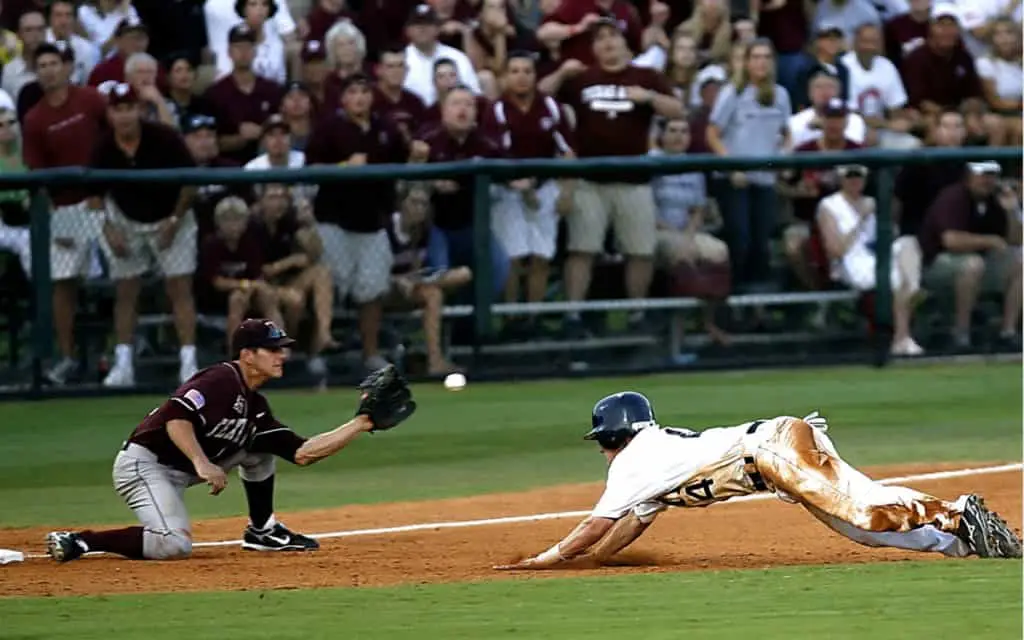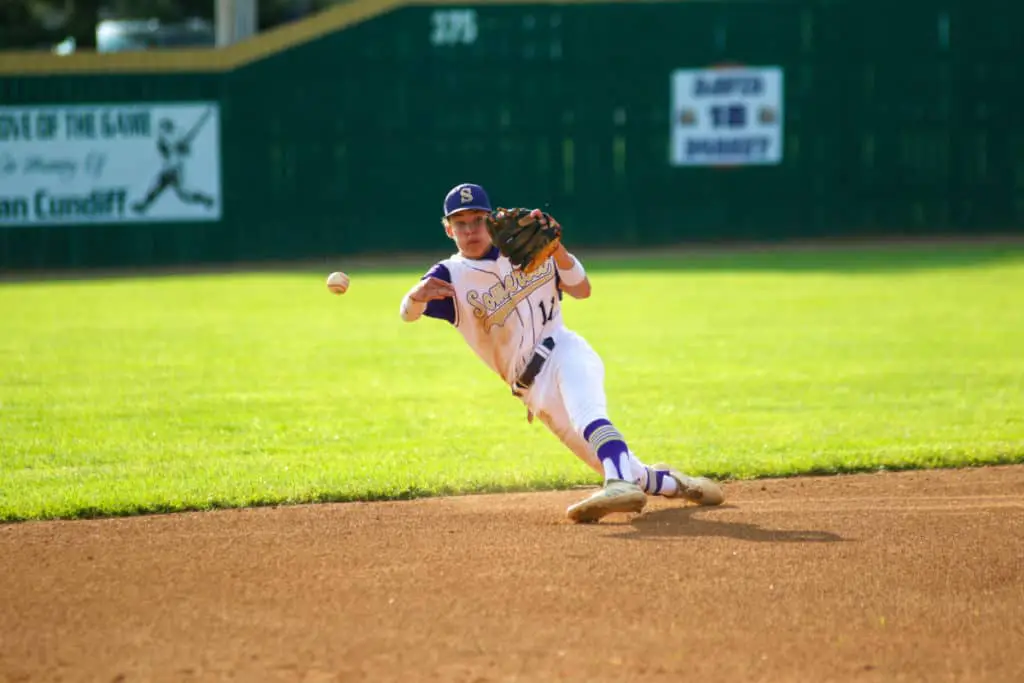Baseball is a game enjoyed by people of all ages.
In the United States, many kids play their first organized sport in either T-Ball, Baseball or Softball.
There are major league stadiums in many major cities and many minor league stadiums in a variety of cities. People love the game and it is a world wide game as well.
Here at sportswarrior365, we try to answer many of the most common questions around the many sports we enjoy to watch, play and coach.
What Is The Easiest Position in Baseball?
Many people consider first base to be the easiest position. The fielder does not need a great deal of athletic ability, a strong arm or anticipation. As long as they are on the taller side and can catch a ball and scoop the occasional ball in the dirt, many can learn to play the position.
First base is a position that many players as they age get moved to in Major League Baseball. If a player can still hit the ball, but is losing the ability to play an infield position or run a ball down in the outfield, they are often moved to first base.
Baseball Position and Roles – All 9 Explained
Overall, while it does take some skill level to play first base, this skill level can be develop and the little tricks of the trade can be taught to just about any player with some baseball background and the ability to catch a ball.
Many Major League teams will use 1st base and the Designated Hitter (DH) spots in the lineup for players that hit for some power and a decent average. Every team needs players who can hit home runs and gap shots and the first base position is an excellent spot for the strong, powerful hitter who may not have a quality defensive position.
In youth baseball, you will typically see one of the taller players who may not be fast enough or have a strong enough arm to play a middle infield position play 1st base.
One of the great things about baseball is the different defensive positions require different skill sets. To play a middle infield position, one must have quality range, a strong arm and the ability to field hard hit ground balls. They must also be able to turn the double play which takes some quality footwork and anticipation.
To play outfield, the player should possess above average speed and an above average arm to run a ball down in the gap and to be able to cut runners from taking the extra base. These different skill sets kepes the game open to players of all sizes as they carry different skills sets that can help a team.

5 Drills for 1st Basemen
- Ground Balls
- Balls in the dirt
- Footwork
- Infield Pop Ups
- Cut Offs and Throw
What position should I play in baseball?
Drill #1: Ground Balls
Most infielders can never take enough grounds balls. Even the most experienced players will want to take plenty of ground balls to continue to sharpen their skills and to ensure they are ready and comfortable to make all of the necessary plays.
One more specific skill they should practice is taking a ground ball to their right side and then underhanding it to the pitcher cover 2nd base. Another drill is to take a ground ball moving to their right and throwing to the short stop covering 2nd base. This can be a difficult throw for the player who doesn’t have the proper footwork.
Overall, take as many ground balls as possible and work on tossing the ball to first base and making the throw to 2nd base.
Drill #2: Balls in the Dirt
Have someone throw balls at you covering first base with the balls being in the dirt. Work on scooping the ball on both sides of you and track how many throw out of 10 you can successful scoop. Track this over time and see what your all time score is and work to get better every time. Make not of if you struggle on your back handed side or front side and spend extra time on your weakest side.

Drill #3: Footwork
The first basement should ensure that he doesn’t set up too soon before the player throws the ball. You want to center your feet on the base and then stretch depending on where the ball is headed. When a first baseman stretches too early, the ball could just be a bit off line and they might struggle to adjust. You want to have a full stretch, but ensure you don’t lock yourself from being able to adjust.
Does height matter in baseball?
Drill #4: Infield Pop Ups
The first baseman needs to be able to go into foul territory and make catches on infield pop ups. Get someone to either throw or hit pretty high pop ups and adjust to where you need to get to. Work on identifying obstacles such as fences or the dugout while still maintaining where the ball might come down at. There is nothing worse than an easy pop up falling into play or foul territory and allowing the batter to each reach base safely or to keep their at bat alive.
Drill #5: Cut Offs and Throw
The first baseman is responsible for a variety of cuts. When there is a runner on 2nd base and there is a base hit to center or right field, the first baseman is responsible for serving as the cut off man. They need to get into position and listen to the directions from the catcher. They will either cut it and hole, cut it and throw or let the bal go through. Work on throwing to a variety of different bases during your cut off drills.
These basic drills will get you headed in the right direction. Continue to work on the basics and have strong fundamentals. Watch major league first baseman work on their craft and their movement during the game. Learn as much as you can and become a student of the game and the position.
